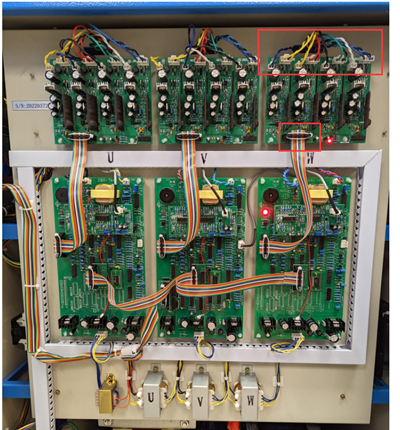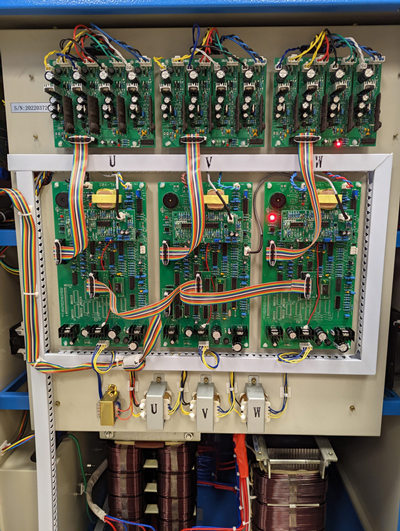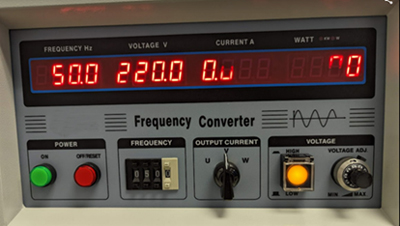Sosa wrote:Thanks much for the follow up. I think this may be a frustrating one to solve as I came in this morning to gather data on the error and answer the questions below, and the system worked perfectly. I have no idea why I was getting errors yesterday after multiple attempts, but today it handles the load with no issues and seems to work fine. All I know to do at this point is use it and if the error comes back, I’ll check the boards and see if the LEDs change state. If it happens again, I’ll try to take a video of the voltages as well.
Even though it is working at the moment, I will try to give as much data as I can in case the problem returns. I’ve attached a picture of the data plate, and a short video with our attached equipment in its initial start-up state.
For the load, it should peak at no more than 17A at 380V (running current should be less). Our load is 380V, 3-phase +N, G. The input is 208V, 3-phase +G.
1. Okay, for the load, you mentioned "it should peak at no more than 17A at 380V", can you tell us what type of load this is? And the power of the load, what is the rated current? Also are you sure the maximum peak current is only 17A?
2. Also can you tell us in detail what is the process by which the converter fails? For example, after setting the output voltage and frequency, does it fail immediately when the load is applied at the beginning, or does it fail again after adding other loads in the middle?
3. You can disconnect the input power of the converter, discharge the internal capacitor (make sure the CBB65 feedback capacitor voltage is <5V), and then re-plug and fix all the plugs on the W-phase driver board (as shown in the figure below), and test again. This is because sometimes bad cable contact can also cause this problem.






